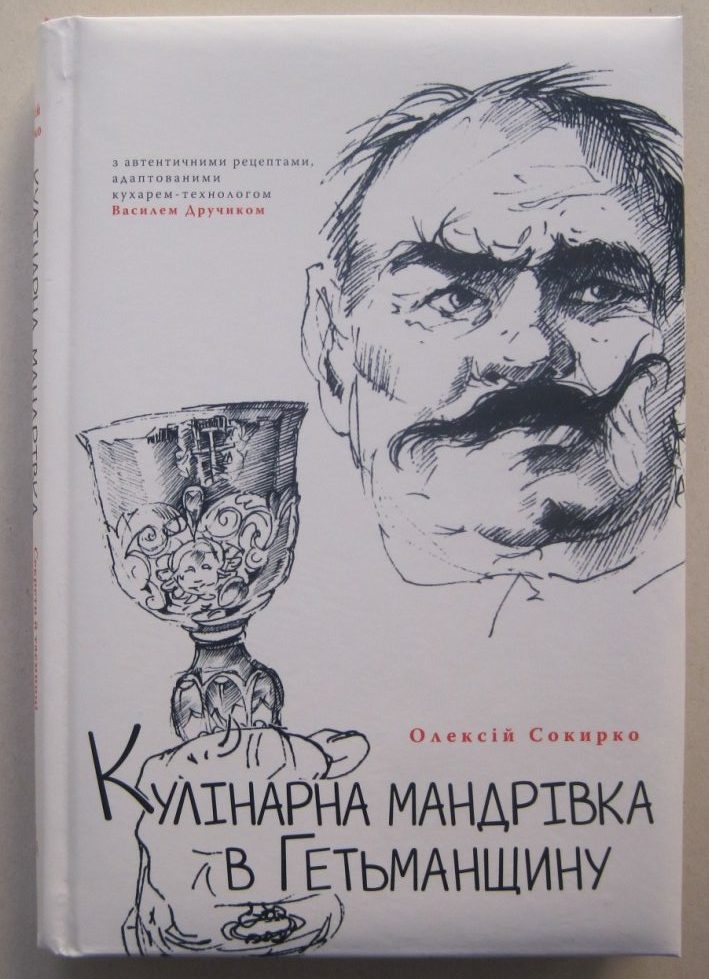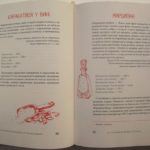15 June 2021 , in Chernihiv Historical Museum named after VV. Tarnovsky Museum meeting was held andwith associate professor of Kyiv National University named after T.. Shevchenko, Candidate of Historical Sciences Oleksiy Sokyrko.
During the event, a unique work by Oleksiy Sokyrko "Culinary Journey to the Hetmanate" was presented, dedicated to the culinary past of modern Ukraine. A new study by a famous historian was published by Tempora.

Oleksiy Sokyrko noted during the presentation, that his book is a story about life, preferences and tastes of the Ukrainian people, whose elite in the seventeenth and eighteenth centuries. was well acquainted with the gastronomic trends of Italian and French cuisines, although it received them mainly through the traditions and experience of the Polish royal court. Gastronomic tastes allow you to more widely represent the era, individual historical figures. The author convincingly remarked, that the culinary history of the Hetmanate is "a kind of continuation of the old Ukrainian tradition formed in the Commonwealth". Because the domestic culture of the Ukrainian lands was a regional component of the Polish-Lithuanian canon. The Hetmanate was associated with the circulation of culinary texts, cookbooks, business advisers, common in the XVIII century. Trade is also a transfer not only of food or drink, but also culinary practices. At the same time, Cossack cuisine was not analogous to peasant cuisine, as romantic literature and ethnography did not try to convince us of this. The book consists of several sections where the arguments about the haute cuisine of the elite are presented, Cossack derived food, diet of monastic refectory, bourgeois delicacies and even features of sub-culture, which revolved around the traditional for Ukrainian lands ham.

Among the sources, which were used in writing the monograph, there were cookbooks, which tell about products, food style, consumption mode, receptions. There are also medical books and reference books on farming. The latter give an idea of the products, who were on the tables of people from different walks of life. Sources of economic nature are reports and records. The source layer is also important, it is a memoir, diaries, private correspondence.
The researcher gave interesting and unexpected facts. Наприклад, information about that, that by the middle of the XIX century. the sheep population in our area was larger than the pig population, so lamb was a very common type of meat in Cossack Ukraine. Instead, lard, a high-calorie product, was used more for storage: it can be stored for a long time, as well as used in canning products. Kvass, most likely, appeared in Ukraine quite late, moreover, under the influence of Russia. Instead, the traditional local tonic drinks were weak beer and fruit kvass.
The book also describes the rich and already, sorry for, forgotten culture of Ukrainian alcoholic beverages. If today in Poland you can still buy high quality honey, prepared according to various ancient recipes, then our fans started to prepare this ancient drink again only recently, besides, not all of them make a product, close in technology and taste to ancient honeys. Grain distillates spread quite quickly and contributed to the emergence of various tinctures. The author talked about the difference between the specifically Ukrainian words "vodka" and "vodka". Rich Ukrainian tradition of delicious alcoholic beverages, sorry for, was interrupted and forgotten, and therefore only today it is revived by single enthusiasts, that, з одного боку, leaves their products "home" and craft, and on the other hand - in the case of popularization and distribution of honey and various tinctures could become a business card of the country in the world, like whiskey drinks, port, and other, which are immediately associated with certain countries and regions.
No less interesting is the section on the pub. We used to visit various institutions, meet for food and drinks with friends, solve certain issues at the table, quench hunger and thirst outside the home. You can read the section on hams and compare, how today's institutions differ from the old ones. And more, you can compare that, that we read about traditional taverns of the XIX century. with that, than they were in the Hetmanate, and find out, that they are not exactly identical. Ham of the XIX century., vividly described by Nikolai Gogol or Ivan Nechuy-Levytsky, which they considered almost a canon of the Ukrainian past, in fact, differed significantly from the traditions of the Cossack era. Khmelnytsky region crushed the nobility's monopoly on distilling and shredding and made it possible for almost all categories of the population to engage in this business.: from the Cossacks to the peasantry. So many Ukrainians have become "restaurateurs" or owners of "pubs". Ham were popular, they could drink, eat, to attend evenings with music and, unlike our time, feature of the day was even that, that large elegant taverns could sometimes be turned into temporary public premises, for example, there could be a court hearing.

The book provides information about the activities of the magistrate's tavern in Chernihiv in the eighteenth century. In particular, valuable information about the institution is provided by the register of movable and immovable property lost by the fire, which provides information about the personal property of the butcher and a list of those things, which were as collateral for the food consumed, drinks.
Many goods and services, and therefore, the exchange of taste preferences took place through Starodub - a regimental city of the Starodub Regiment, "Ukrainian Gdansk" or the land trading port of the Hetmanate, as noted by Alexei Sokyrko.
Cossack marching cuisine is considered in a separate section. Simple and easy to cook to be nutritious, but above all - they last a long time. The original cuisine is also influenced by the East. Teterya and salami became dishes, formed in the steppes in close contact with the nomads. Readers will be able to learn more about Cossack rations and about that, which took with him on campaigns Cossack officers.
The author managed to show, how our ancestors taught Muscovites to cook the best dishes of Ukrainian cuisine. Subsequently, the Russians appropriated them. Not wonderful, after all, only the impressions of the eleven chefs of Hetman Ivan Mazepa during his visit to Moscow in 1702 Dr.. had to make a great impression on the local elite.
Oleksiy Sokyrko talked about the richness of the city's Ukrainian gastronomic culture. Phenomena, which for centuries tried to marginalize. Nevertheless, the gastronomic component of the life of Kyiv artisans and burghers was close to European traditions., with an obvious correction for the influence of Orthodoxy.
Oleksiy Sokyrko's book also has a useful aspect, after all, it contains authentic recipes adapted by chef-technologist Vasyl Druchyk.
Research the history of the kitchen, in addition to the interest to learn, how our ancestors lived and ate in ancient times, can also answer important questions of historical science. Food, which is at a peasant's dinner or at a banquet of a Cossack sergeant, begins its journey from the surrounding fields, pasture or land or comes from distant lands. The study of ancient cuisine gives a better understanding of the then local agricultural production, they, which of them predominated, which were familiar and mundane, and which - seasonal or present only at affluent tables for the holidays. Також, exploring the history of the kitchen, you can get information about the import and export of products, explore trade links in our part of the world. Зрештою, researching the history of the kitchen can even answer questions, to which civilization our ancestors belonged.





More Stories
Congratulations to dear Vera Zaychenko!
Anthem of Ukraine and Verbytskyi
Commemoration of the liquidators of the consequences of the accident at the Chernobyl nuclear power plant